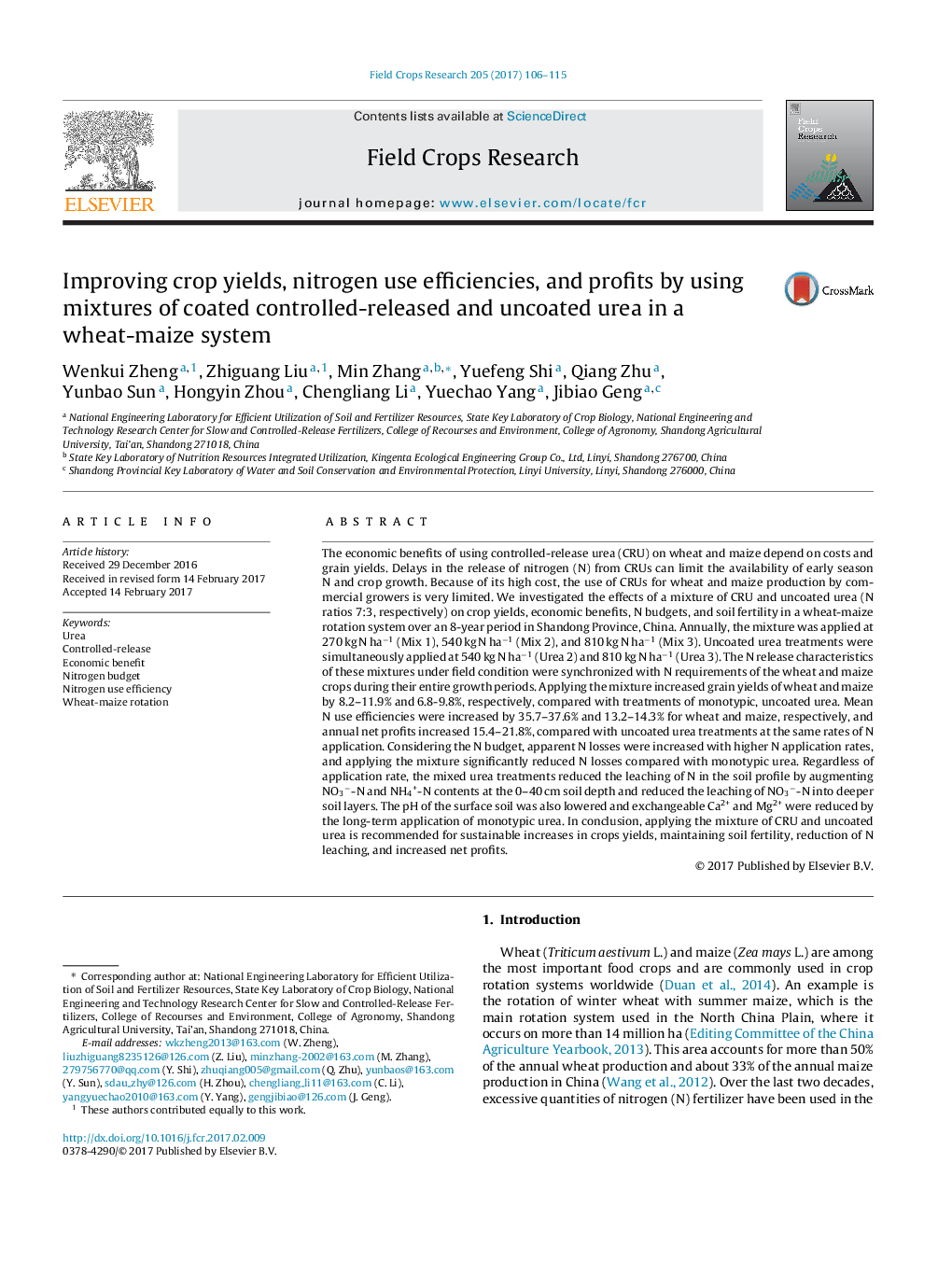| Article ID | Journal | Published Year | Pages | File Type |
|---|---|---|---|---|
| 5761596 | Field Crops Research | 2017 | 10 Pages |
Abstract
The economic benefits of using controlled-release urea (CRU) on wheat and maize depend on costs and grain yields. Delays in the release of nitrogen (N) from CRUs can limit the availability of early season N and crop growth. Because of its high cost, the use of CRUs for wheat and maize production by commercial growers is very limited. We investigated the effects of a mixture of CRU and uncoated urea (N ratios 7:3, respectively) on crop yields, economic benefits, N budgets, and soil fertility in a wheat-maize rotation system over an 8-year period in Shandong Province, China. Annually, the mixture was applied at 270 kg N haâ1 (Mix 1), 540 kg N haâ1 (Mix 2), and 810 kg N haâ1 (Mix 3). Uncoated urea treatments were simultaneously applied at 540 kg N haâ1 (Urea 2) and 810 kg N haâ1 (Urea 3). The N release characteristics of these mixtures under field condition were synchronized with N requirements of the wheat and maize crops during their entire growth periods. Applying the mixture increased grain yields of wheat and maize by 8.2-11.9% and 6.8-9.8%, respectively, compared with treatments of monotypic, uncoated urea. Mean N use efficiencies were increased by 35.7-37.6% and 13.2-14.3% for wheat and maize, respectively, and annual net profits increased 15.4-21.8%, compared with uncoated urea treatments at the same rates of N application. Considering the N budget, apparent N losses were increased with higher N application rates, and applying the mixture significantly reduced N losses compared with monotypic urea. Regardless of application rate, the mixed urea treatments reduced the leaching of N in the soil profile by augmenting NO3â-N and NH4+-N contents at the 0-40 cm soil depth and reduced the leaching of NO3â-N into deeper soil layers. The pH of the surface soil was also lowered and exchangeable Ca2+ and Mg2+ were reduced by the long-term application of monotypic urea. In conclusion, applying the mixture of CRU and uncoated urea is recommended for sustainable increases in crops yields, maintaining soil fertility, reduction of N leaching, and increased net profits.
Keywords
Related Topics
Life Sciences
Agricultural and Biological Sciences
Agronomy and Crop Science
Authors
Wenkui Zheng, Zhiguang Liu, Min Zhang, Yuefeng Shi, Qiang Zhu, Yunbao Sun, Hongyin Zhou, Chengliang Li, Yuechao Yang, Jibiao Geng,
